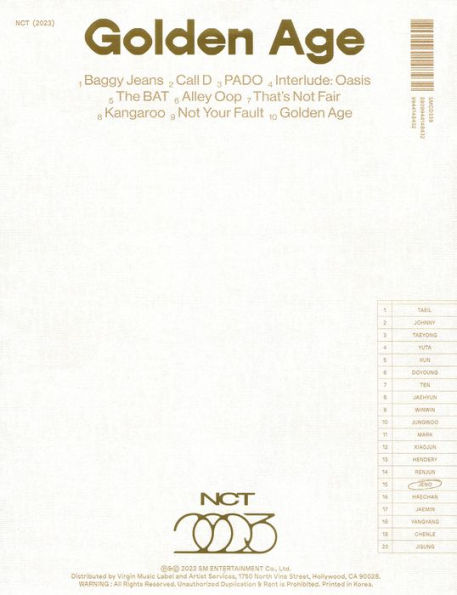Home
Smithsonian Stories: Chronicle of a Golden Age, 1964-1984
Barnes and Noble
Loading Inventory...
Smithsonian Stories: Chronicle of a Golden Age, 1964-1984
Current price: $190.00

Barnes and Noble
Smithsonian Stories: Chronicle of a Golden Age, 1964-1984
Current price: $190.00
Loading Inventory...
Size: Hardcover
*Product information may vary - to confirm product availability, pricing, shipping and return information please contact Barnes and Noble
Why is the Smithsonian more than the "Nation's Attic?" Or more than a museum complex? As Wilton S. Dillon shows, the Smithsonian came to be the institution we know today under the twenty-year leadership of "Sun King" S. Dillon Ripley.
Ripley aspired to reinvent the Smithsonian as a great university—with museums. Although little understood by the public at large, it began as a basic research center. The Smithsonian remains a key contributor to the world of higher learning and functions diplomatically as the ministry of culture for the United States. Dillon provides backstage insights into Ripley's quest for the wholeness of knowledge. He describes how he inspired its role as a "theater of ideas as well as artifacts." Under his tutelage, the National Mall became a playground for world intelligentsia, an "intellectual free trade zone" in the shadow of the nation's political capital.
Dillon reminds us that interdisciplinary, international Smithsonian symposia foreshadowed twenty-first-century issues and trends. His descriptions of the educational rewards of balancing tradition with the avant-garde are inspiring. As Dillon reminds us, Ripley's twenty-year reign may well have helped spark the waning embers of the Enlightenment.
Ripley aspired to reinvent the Smithsonian as a great university—with museums. Although little understood by the public at large, it began as a basic research center. The Smithsonian remains a key contributor to the world of higher learning and functions diplomatically as the ministry of culture for the United States. Dillon provides backstage insights into Ripley's quest for the wholeness of knowledge. He describes how he inspired its role as a "theater of ideas as well as artifacts." Under his tutelage, the National Mall became a playground for world intelligentsia, an "intellectual free trade zone" in the shadow of the nation's political capital.
Dillon reminds us that interdisciplinary, international Smithsonian symposia foreshadowed twenty-first-century issues and trends. His descriptions of the educational rewards of balancing tradition with the avant-garde are inspiring. As Dillon reminds us, Ripley's twenty-year reign may well have helped spark the waning embers of the Enlightenment.
Why is the Smithsonian more than the "Nation's Attic?" Or more than a museum complex? As Wilton S. Dillon shows, the Smithsonian came to be the institution we know today under the twenty-year leadership of "Sun King" S. Dillon Ripley.
Ripley aspired to reinvent the Smithsonian as a great university—with museums. Although little understood by the public at large, it began as a basic research center. The Smithsonian remains a key contributor to the world of higher learning and functions diplomatically as the ministry of culture for the United States. Dillon provides backstage insights into Ripley's quest for the wholeness of knowledge. He describes how he inspired its role as a "theater of ideas as well as artifacts." Under his tutelage, the National Mall became a playground for world intelligentsia, an "intellectual free trade zone" in the shadow of the nation's political capital.
Dillon reminds us that interdisciplinary, international Smithsonian symposia foreshadowed twenty-first-century issues and trends. His descriptions of the educational rewards of balancing tradition with the avant-garde are inspiring. As Dillon reminds us, Ripley's twenty-year reign may well have helped spark the waning embers of the Enlightenment.
Ripley aspired to reinvent the Smithsonian as a great university—with museums. Although little understood by the public at large, it began as a basic research center. The Smithsonian remains a key contributor to the world of higher learning and functions diplomatically as the ministry of culture for the United States. Dillon provides backstage insights into Ripley's quest for the wholeness of knowledge. He describes how he inspired its role as a "theater of ideas as well as artifacts." Under his tutelage, the National Mall became a playground for world intelligentsia, an "intellectual free trade zone" in the shadow of the nation's political capital.
Dillon reminds us that interdisciplinary, international Smithsonian symposia foreshadowed twenty-first-century issues and trends. His descriptions of the educational rewards of balancing tradition with the avant-garde are inspiring. As Dillon reminds us, Ripley's twenty-year reign may well have helped spark the waning embers of the Enlightenment.

















